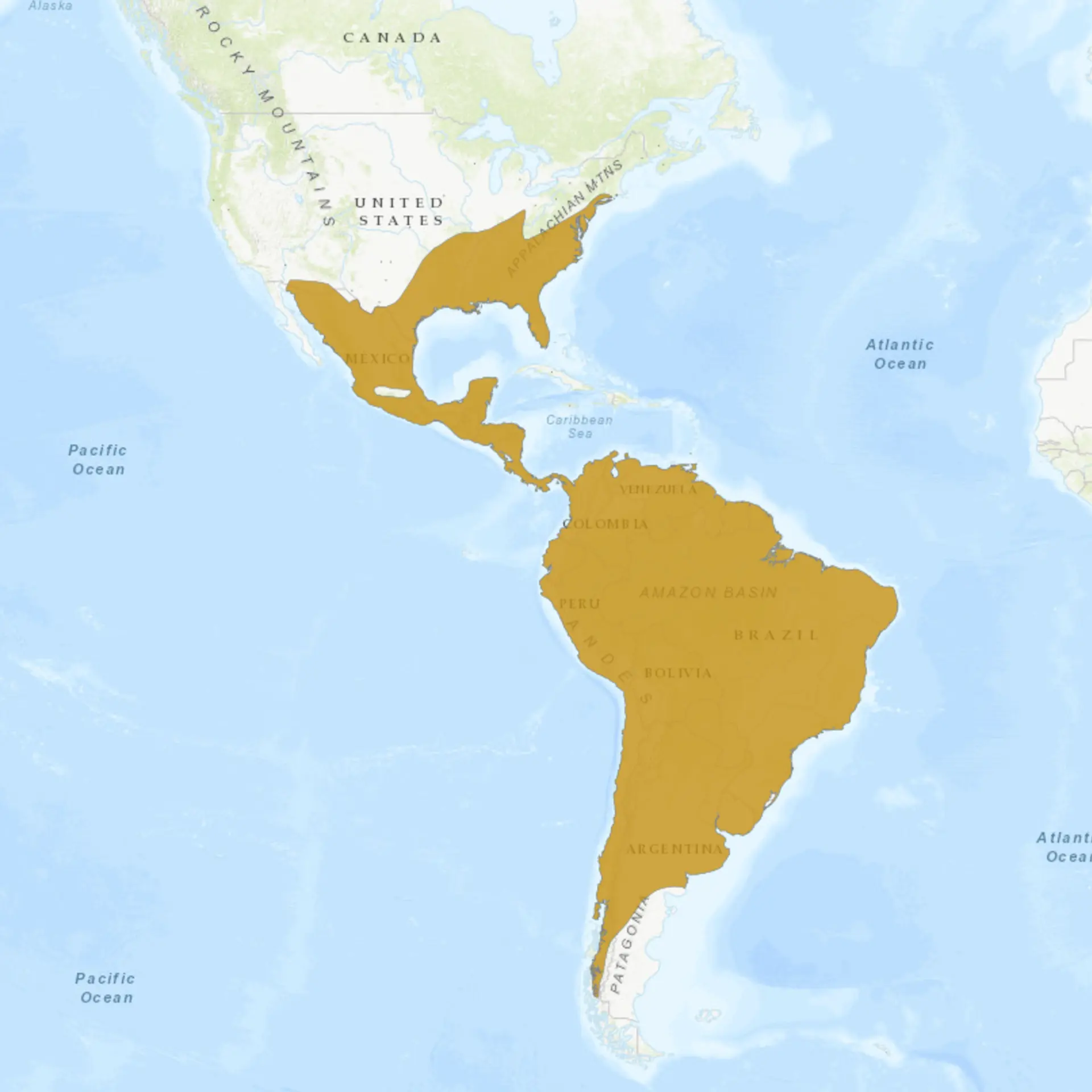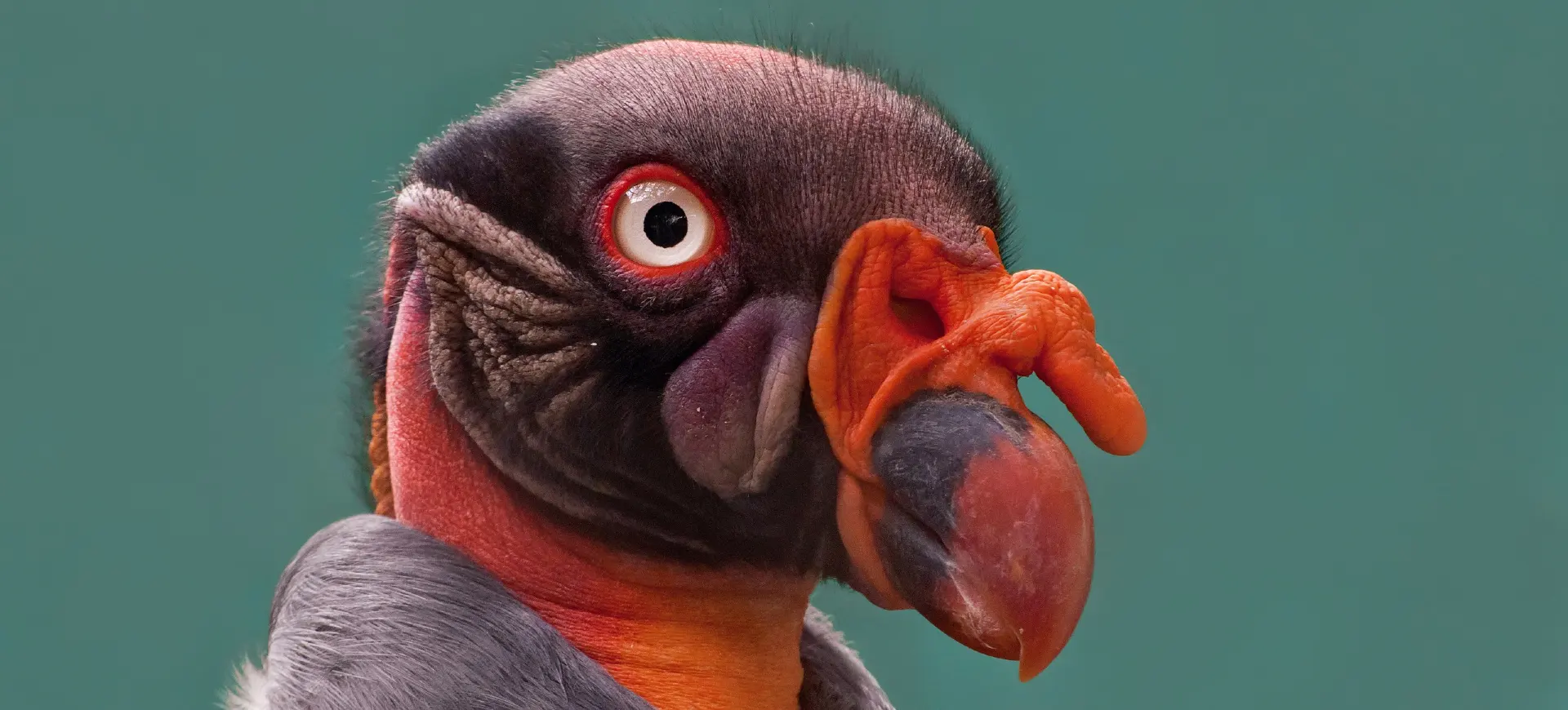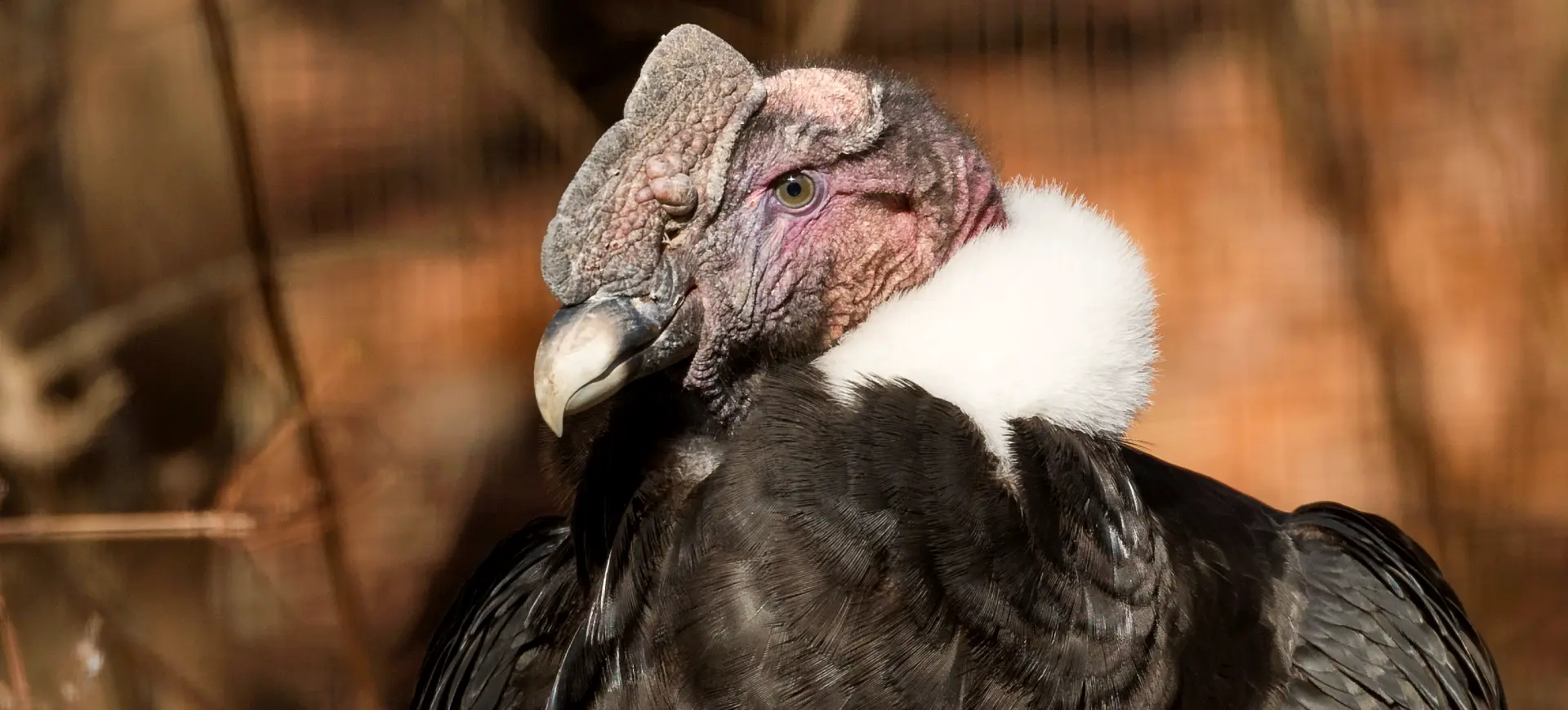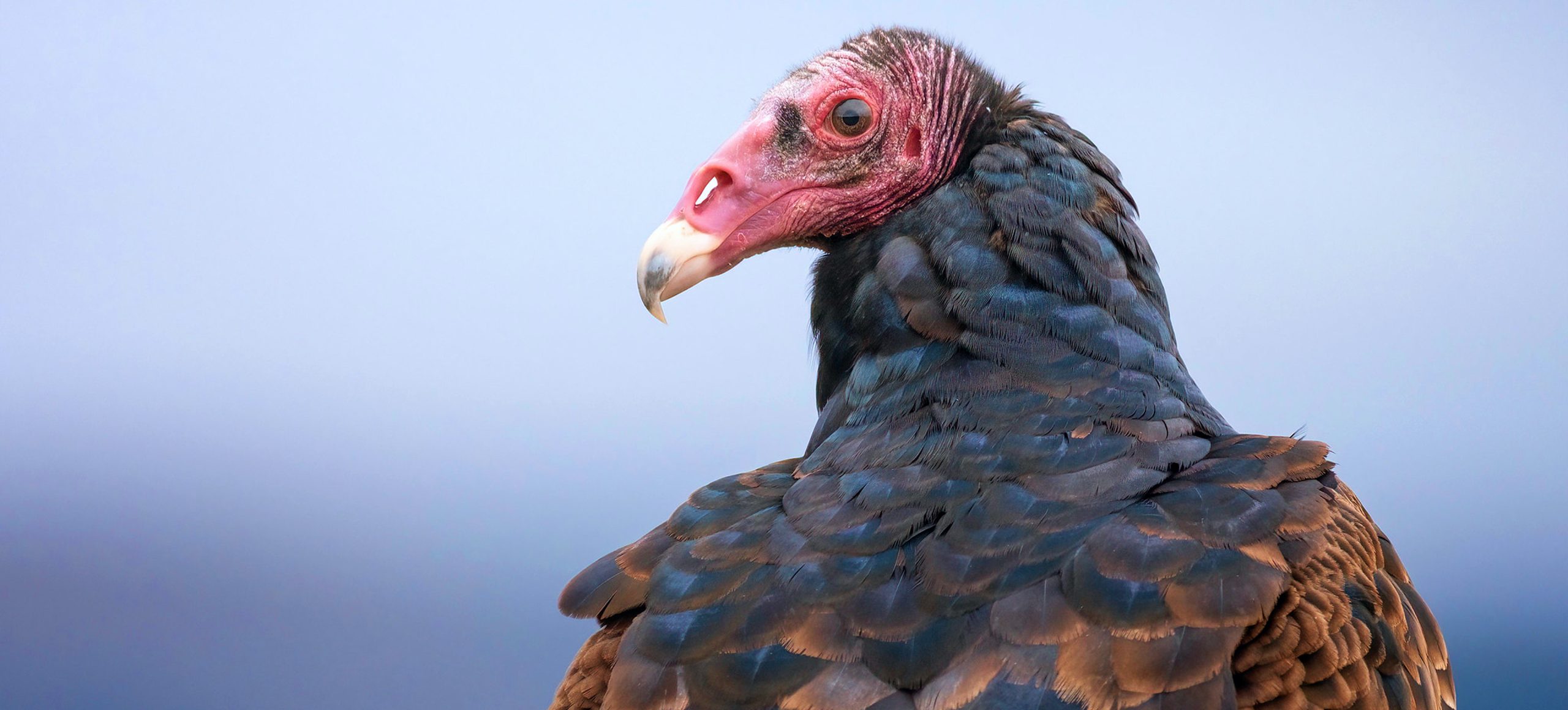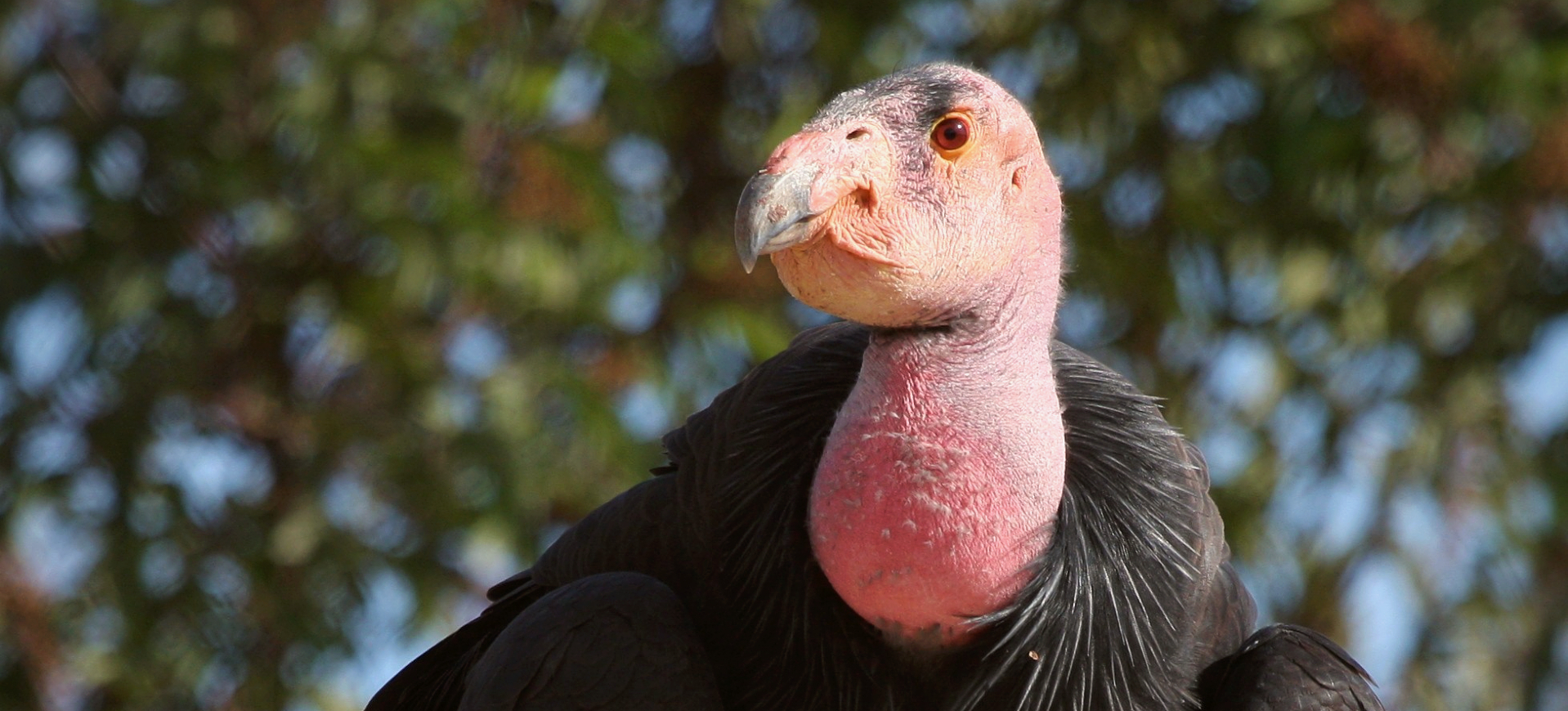Overview
The Black Vulture, also known as the American black vulture, is a scavenging bird of prey throughout the Americas. It is a highly adaptable species that thrives in many habitats, including forests, grasslands, and urban areas. Known for its entirely black plumage, bare black head, and short, squared tail, this vulture plays a vital ecological role as a scavenger by consuming carrion and preventing the spread of disease. Black vultures are often observed soaring in the sky with their wings held flat, using thermal currents to conserve energy during flight.
This species is highly social, frequently seen in groups while foraging or roosting, and often relies on the sharp eyesight of other scavengers, such as turkey vultures, to locate food. Unlike many other vulture species, black vultures occasionally kill small or weak animals when carrion is scarce. Their strong social bonds and cooperative behavior contribute to their success in rural and urban settings. Despite being common and widespread, they sometimes conflict with humans, particularly livestock farmers.
The black vulture is protected under the Migratory Bird Treaty Act in the United States, which prohibits harm or harassment of the species. Thanks to its adaptability and food availability from human sources, such as roadkill and garbage, the black vulture has a stable and increasing population. This resilience makes it one of the most successful scavenging birds in the Americas. However, its increasing presence near human settlements raises concerns about its impact on livestock and other wildlife.
Taxonomy
Kingdom
Phylum
Class
Order
Family
Genus
Species
Type
Current distribution:
The black vulture is widespread across the Americas, extending from the southeastern United States through Mexico, Central America, and South America to as far south as Chile and Argentina. It is most commonly found in the southeastern and eastern regions of the United States, but its range has been expanding northward in recent decades. In Central and South America, it is one of the most common vultures found in various habitats, from lowland forests to mountainous regions.
The species is most abundant in areas with plentiful food sources, such as agricultural lands, urban centers, and coastal regions. While its populations are stable or increasing in many areas, localized declines may occur due to habitat destruction or targeted control measures by farmers. Black vultures are often seen in large communal roosts, sometimes numbering in the hundreds, particularly near abundant food sources. Their ability to adapt to human-modified environments has contributed to their success and widespread distribution.
Physical Description:
The black vulture is a medium-sized vulture with a uniform black plumage and a bare, wrinkled, grayish-black head and neck. Its wings are broad and short compared to other vultures, with white patches near the wingtips that are visible during flight. The tail is short and squared, and its legs and feet are grayish-white, with relatively weak talons adapted for scavenging rather than hunting. Its eyes are dark brown, and its hooked beak is strong and sharp, allowing it to tear into tough carcasses.
Black vultures typically measure 22–29 inches (56–74 cm) in height and have a wingspan of about 52–66 inches (132–168 cm). Adults weigh between 3.5–6.6 pounds (1.6–3 kg), with little difference in size between males and females. Juveniles resemble adults but may have slightly duller plumage and less defined bare patches on their heads. The species is easily distinguished from the similar-looking turkey vulture by its shorter tail and lack of red coloration on the head.

Lifespan: Wild: ~15 Years || Captivity: ~25 Years

Weight: Male: 4.0–5.4 lbs (1.8–2.45 kg) || Female: 4.4–6.2 lbs (2.0–2.81 kg)

Length: Male: 22–25 in (56–64 cm) || Female: 24–27 in (61–69 cm)

Height: Male & Female: 22–29 in (56–74 cm)

Wingspan: Male & Female: 59 in (150 cm)

Top Speed: 35 mph (56 km/h)
Characteristic:
Native Habitat:
Black vultures are native to the Americas and inhabit many environments, including forests, savannas, grasslands, wetlands, and urban areas. They are commonly found near open areas with abundant carrion, such as roadsides, landfills, and agricultural fields. Roosting sites are often located in tall trees, cliffs, or man-made structures that provide safety and a clear view of the surrounding area. Black vultures are particularly associated with warm climates, but their range extends into temperate regions.
This highly adaptable species can survive in remote wilderness areas and densely populated urban settings. Wetlands and river systems are especially important for nesting and roosting, as they provide a reliable source of food and water. In some areas, black vultures are more common around human settlements due to food availability from garbage and roadkill. Their ability to exploit a variety of habitats has allowed them to expand their range and maintain stable populations despite environmental changes.
Biogeographical Realms:
Continents:
Countries:
Diet:
Diet & Feeding Habits:
The black vulture is a scavenger, primarily feeding on carrion, which includes the carcasses of mammals, birds, reptiles, and amphibians. Because its sense of smell is poorly developed compared to its counterparts, the black vulture often relies on other scavengers, such as turkey vultures, to locate food. Once the food is spotted, black vultures aggressively compete for access, sometimes driving away smaller scavengers. They also feed on roadkill, garbage, and discarded animal remains from human activities, making them highly adaptable to urban and agricultural environments.
Unlike most vultures, black vultures occasionally kill small or weak animals, such as newborn livestock, when food is scarce. They are opportunistic feeders and can subsist on various food sources, including eggs and small vertebrates. To aid the digestion of tough carcass material, they have highly acidic stomachs, which allow them to consume decaying meat without harm. In captivity, black vultures are typically fed a diet of meat, fish, and specially formulated carrion substitutes to mimic their natural diet.
Mating Behavior:
Mating Description:
Black vultures are monogamous and form long-term pair bonds, often staying with the same mate for life. Courtship involves various displays, such as synchronized flight, hopping, and spreading wings to attract mates. The breeding season varies depending on the location, but it generally occurs in the spring or early summer in temperate regions and year-round in tropical areas. Pairs often nest in secluded locations, such as hollow trees, caves, abandoned buildings, or dense vegetation, to protect their eggs from predators.
The female typically lays two eggs, which both parents incubate for about 32–45 days. Once the chicks hatch, they are altricial, meaning they are born blind and helpless and are fed regurgitated food by both parents. The young fledge is around 70–95 days old but may remain with their parents for several months, learning to forage and fly. Black vultures are attentive parents, and their cooperative care ensures high survival rates for their offspring.
Reproduction Season:
Birth Type:
Pregnancy Duration:
Female Name:
Male Name:
Baby Name:
Social Structure Description:
Black vultures are highly social birds. They are often seen foraging, roosting, and nesting in groups. They establish strong family bonds, with parents and offspring frequently remaining together for extended periods. Communal roosts, sometimes numbering hundreds of individuals, provide safety and opportunities for communication and cooperation. Black vultures rely on social cues and teamwork to locate and access food within these groups.
Communication occurs through vocalizations, body language, and visual displays, though black vultures are generally quieter than other birds. Their social nature also helps them compete effectively with other scavengers, as groups of black vultures can overpower lone turkey vultures or other competitors at carcasses. Despite their social behavior, black vultures maintain monogamous pair bonds and defend their nesting sites against intruders. This balance between sociality and territoriality ensures their survival in various environments.
Groups:
Conservation Status:
Population Trend:
The black vulture population is stable and even increasing in some regions due to its adaptability and close association with human activities. It benefits from abundant food sources such as roadkill, agricultural waste, and garbage, often more plentiful in human-modified landscapes than natural habitats. The species has been expanding its range northward in the United States, particularly into the Mid-Atlantic and Midwest regions. In Central and South America, the black vulture remains one of the most widespread scavengers.
Although the species is not currently threatened, it faces occasional conflicts with humans, particularly livestock farmers who report predation on newborn animals. In some regions, control measures are implemented to reduce populations near agricultural areas, but these efforts have little impact on the overall population. Black vultures are protected under the Migratory Bird Treaty Act in the United States, which helps ensure their long-term survival. Monitoring programs and public education efforts focus on minimizing human-wildlife conflict and promoting coexistence.
Population Threats:
While the black vulture is not globally threatened, it faces localized threats, including habitat destruction, accidental poisoning, and human-wildlife conflict. Farmers occasionally target black vultures due to reports of predation on newborn livestock, though such incidents are relatively rare. The species is also vulnerable to poisoning from consuming carcasses laced with pesticides or lead ammunition, which can severely impact populations. Collisions with vehicles while feeding on roadkill are another common source of mortality.
Urbanization and removing nesting and roosting sites may also affect some populations, particularly in heavily developed areas. Climate change could alter the availability of food and suitable habitats, potentially impacting the species in the long term. Despite these threats, the black vulture’s adaptability and opportunistic behavior have allowed it to maintain stable and even increasing populations across its range. Conservation measures focus on addressing conflicts with humans and protecting key habitats.
Conservation Efforts:
The black vulture is protected under national and international laws, such as the Migratory Bird Treaty Act, which prohibits hunting or harassing species in the United States. Conservation efforts primarily focus on mitigating human-wildlife conflicts by educating farmers and promoting non-lethal deterrents to prevent livestock predation. Monitoring programs track population trends and investigate the impact of threats such as poisoning and habitat loss.
Public awareness campaigns aim to reduce the use of lead ammunition and prevent the poisoning of carcasses, which can harm vultures and other scavengers. In urban areas, efforts are made to protect roosting sites and encourage coexistence through waste management practices that limit access to garbage. Rehabilitation centers also rescue and reintroduce injured or orphaned black vultures. The species’ resilience and adaptability ensure that it remains a vital part of the ecosystems it inhabits.
Additional Resources:
Fun Facts
- Black vultures have one of the shortest tails among vultures, giving them a distinctive silhouette in flight.
- They lack a sense of smell and rely on sight or following turkey vultures to locate carrion.
- Unlike most scavengers, black vultures sometimes hunt small, live prey, especially when food is scarce.
- They play an essential role in ecosystems by consuming carrion, preventing the spread of disease.
- Their stomach acid is highly corrosive, allowing them to safely digest decaying meat and some bacteria.
- Black vultures are among the few birds that urinate on their legs to cool themselves and kill bacteria.
- Their communal roosts help protect them from predators and harsh weather conditions.
- Black vultures are agile fliers and can soar for hours without flapping their wings, using thermal currents.
- In some cultures, they are considered symbols of purification and renewal due to their scavenging habits.
- Out of curiosity, they are known to peck at rubber materials, such as car window seals and roofing.


